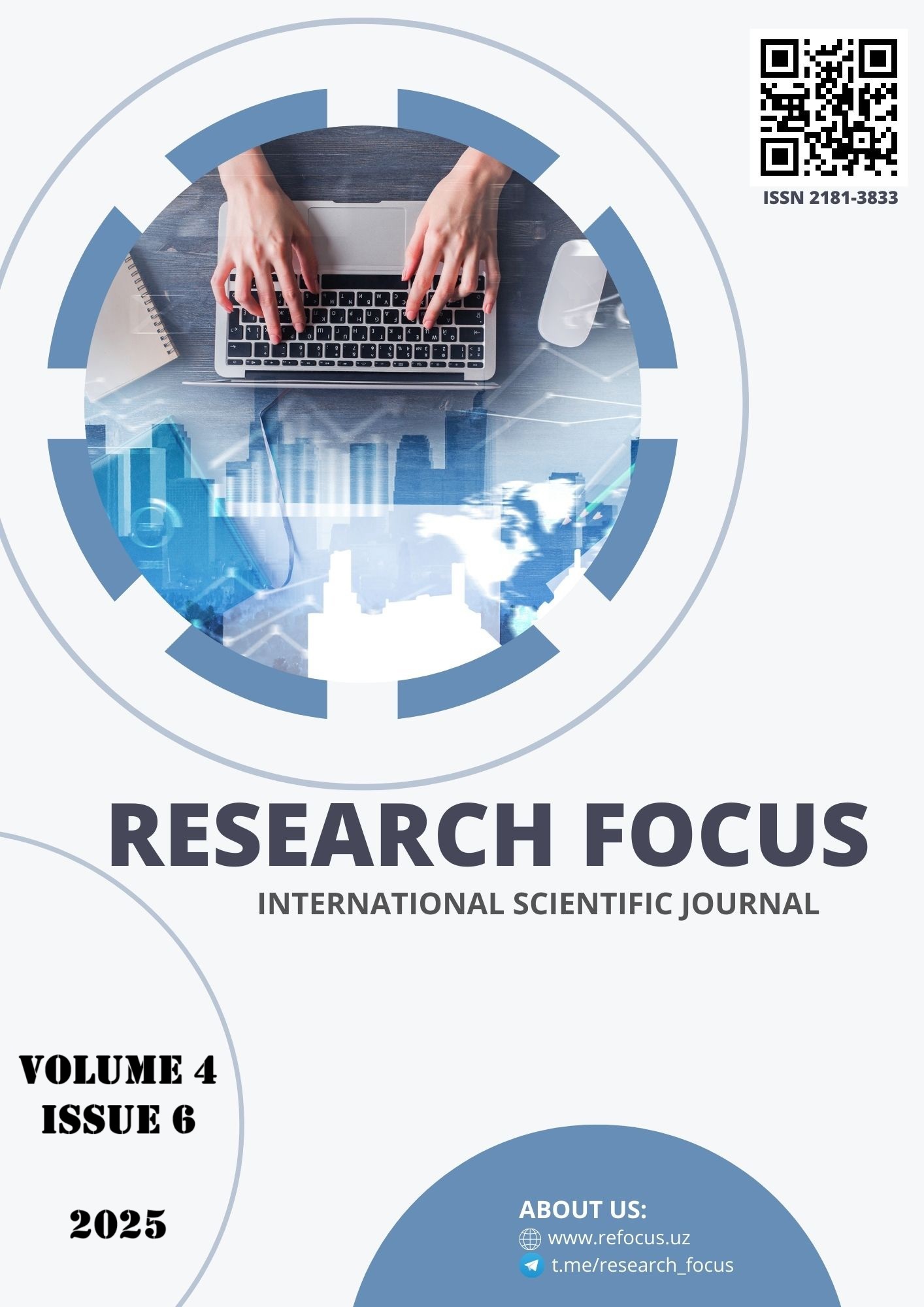CHALLENGES OF USING DIGITAL TECHNOLOGIES AMONG PRE-SERVICE FOREIGN LANGUAGE TEACHERS IN UZBEKISTAN
Main Article Content
Abstract
This article investigates the prevailing challenges encountered by pre-service English language teachers in integrating digital technologies into their prospective teaching practices. The research was conducted among third-year undergraduate students enrolled in English Philology programs at Namangan State University, Fergana State University, and Andijan State Institute of Foreign Languages. Findings indicate that while these students possess elementary knowledge of common digital tools such as Google Classroom and Moodle, they lack confidence, pedagogical understanding, and strategic competence necessary for effective classroom technology use. Moreover, the study highlights broader systemic problems, including unreliable internet access in certain regions of Uzbekistan and the widespread unfamiliarity of both teachers and students with basic computer terminology and digital operational language. Practical recommendations for improving digital literacy and reducing these barriers are offered in light of the study’s outcomes.
Article Details

This work is licensed under a Creative Commons Attribution 4.0 International License.
References
European Commission, Directorate-General for Translation. (2022). EMT competence framework 2022. Publications Office of the European Union. https://doi.org/10.2782/613507
Kessler, G., & Hubbard, P. (2017). Language teacher education and technology: Approaches and practices. Bloomsbury Academic.
Redecker, C. (2017). European framework for the digital competence of educators: DigCompEdu. Publications Office of the European Union. https://doi.org/10.2760/159770
Stockwell, G. (2022). Computer-assisted language learning: Diversity in research and practice (2nd ed.). Cambridge University Press.
Botirova, Z., & Alijonova, G. (2022). Digital educational technologies. Евразийский журнал социальных наук, философии и культуры, 2(13), 146-148.
Botirova, Z. (2023). Bo ‘lajak chet til o ‘qituvchilarining kasbiy kompetensiyasini raqamli ta’lim texnologiyalari asosida rivojlantirish. Namangan davlat universiteti Ilmiy axborotnomasi,(11), 597-606.
Kizi, B. Z. X. (2023). Role of digital technologies in education. Строительство и образование, 3, 28-34.
Hampel, R., & Stickler, U. (2005). New skills for new classrooms: Training tutors to teach languages online. Computer Assisted Language Learning, 18(4), 311-326. https://doi.org/10.1080/09588220500335455
Schmid, E. C. (2008). Potential pedagogical benefits and drawbacks of multimedia use in the English language classroom equipped with interactive whiteboard technology. Computers & Education, 51(4), 1553-1568.
https://doi.org/10.1016/j.compedu.2008.02.005
Prensky, M. (2001). Digital natives, digital immigrants. On the Horizon, 9(5), 1-6.https://doi.org/10.1108/10748120110424816
Dudeney, G., & Hockly, N. (2007). How to teach English with technology. Pearson Education ESL.
Selwyn, N. (2011). Education and Technology: Key Issues and Debates. Continuum International Publishing Group.

